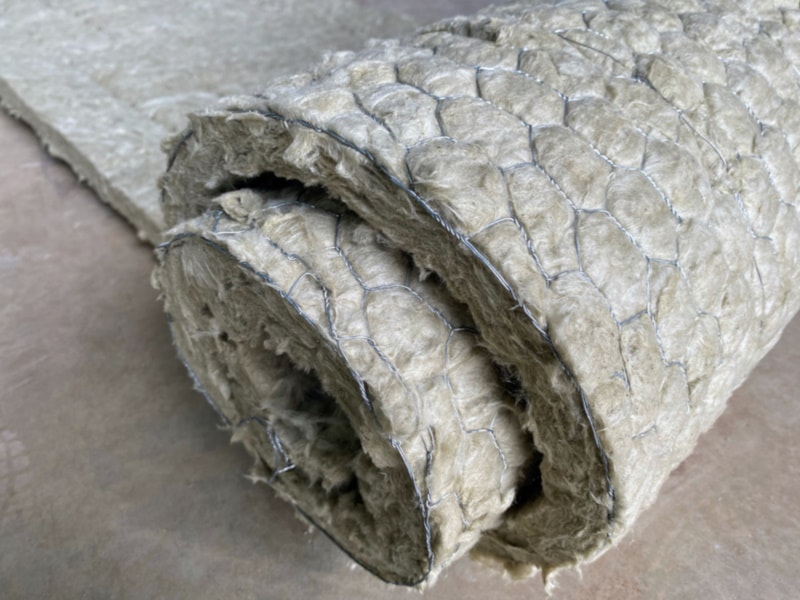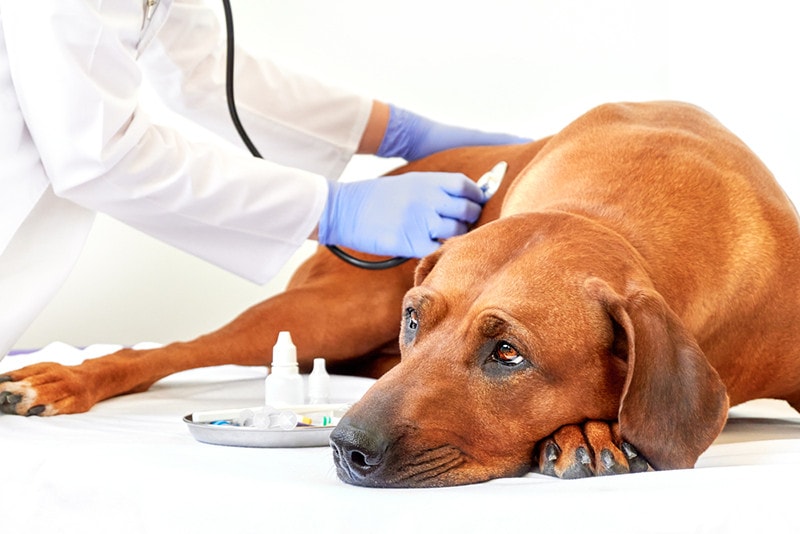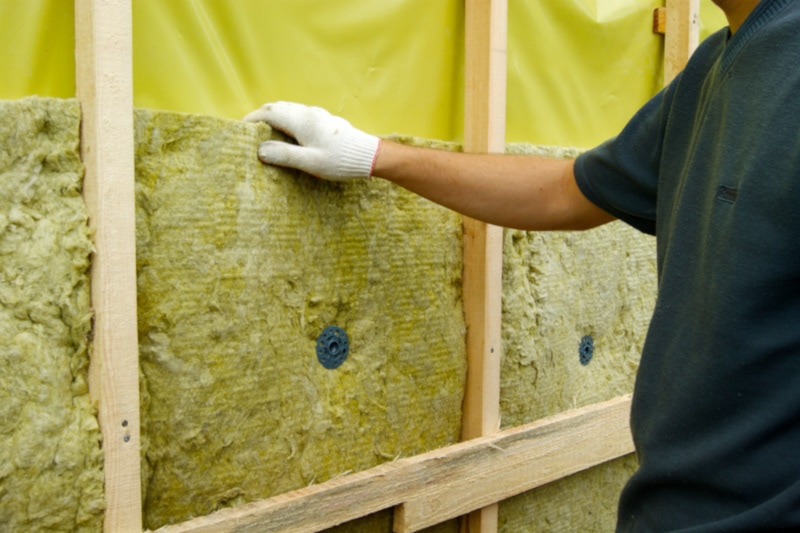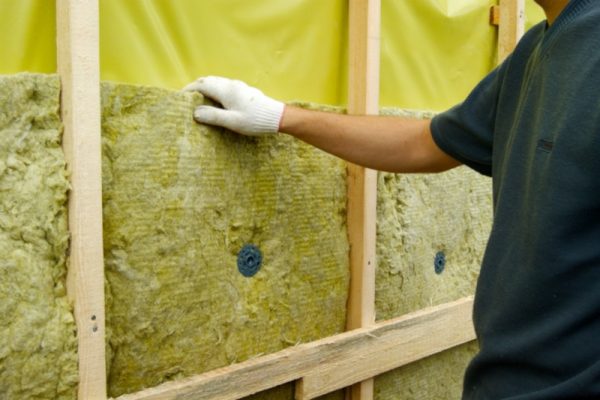Click to Skip Ahead
Generally speaking, insulation can be found in every house. It can keep the home cool in the summer and warm in the winter.
If your dog has eaten insulation, take them to the vet immediately. Even in small amounts, insulation can cause severe health problems, which can range from vomiting, abdominal pain, distension, and constipation to gastrointestinal obstruction and even life threatening complications. For these reasons, eating insulation represents a medical emergency, and your pet must be seen by a vet immediately.
Read on to learn more about what can happen if your dog consumes insulation, the clinical signs of the various possible complications, and what you can do to help your four-legged friend.

What Do I Need to Know About Insulation?
Knowing what kind of insulation your dog has eaten will help the veterinarian find the best approach and treatment for your dog. Here are the most popular types.
Polystyrene

Polystyrene is widely used in construction for thermal insulation projects (including for dog houses), but it is also known as a material for packaging. It is a polymerized, weakly transparent material made of styrene (styrene monomer), a simple liquid hydrocarbon obtained from petroleum. Polystyrene can come in a variety of colors but is often white.
Fiberglass
Fiberglass is fiber-reinforced plastic combined with glass fibers. Glass is a material used in several areas of construction. It is used as a material for the execution of construction elements (walls, curtain walls, roofs, floors, etc.), as a material for the execution of interior or exterior finishing works, and as an insulating material (glass wool/fiberglass).
It is made of small shards of glass and is dangerous for pets. It can make your dog sick in a short time if ingested.
Polyurethane Foam
Polyurethane foam is a material that fits and adheres to most surfaces and building materials, providing thermal and sound insulation and having the role of sealing and filling. It is composed of two liquid substances, isocyanate and polyol, which expand in contact with air.
Polyisocyanurate Foam
Polyisocyanurate foam is a polymer that is similar to polyurethane foam, having almost the same chemical composition, except certain substances/catalysts that lead to different chemical reactions at higher temperatures, resulting in a relatively different product.
Stone Wool
Stone wool is a stiffer product than fiberglass, but it also has a slightly higher weight. Unlike fiberglass, rock wool offers better sound insulation and helps reduce the heat transfer between the inside and outside.
Asbestos

Many old houses have asbestos in the insulation. Asbestos is a natural mineral whose fibers can be separated into thin, durable threads. It is widely used in many industries because its fibers are excellent insulators. They are resistant to heat, fire, and chemicals and do not conduct electricity.
However, asbestos is particularly dangerous, being classified as carcinogenic. If products containing asbestos are damaged, the small fibers can be inhaled, leading over time to diseases like asbestosis, mesothelioma, and other forms of cancer.
My Dog Ate Insulation, What Happens Now?
If your dog has eaten insulation, regardless of the type, it should cause concern. Contact your vet immediately because once swallowed, it can lead to severe health problems, such as:
- Choking
- Gastrointestinal blockage
- Gastrointestinal ulceration
- Intestinal damage and perforation
- Sepsis
- Poisoning
- Death
Moreover, asbestos can lead to cancer and other severe diseases when animals are exposed to it over a period of time, while ingestion can cause digestive issues and a blockage. Fiberglass can lead to vomiting and diarrhea with blood (if ingested) and respiratory problems (if inhaled). Insulation is made up of small fibers that can cause lung irritation and breathing difficulties once they are inhaled. In severe cases, it can even lead to death.
So, if your dog consumes insulation, it must be treated as a medical emergency.

Signs That Your Dog Ate Insulation
There are a few signs that will confirm if your dog ate insulation. First, check if the insulation is intact and if there are any visible signs of damage. If there are holes or pieces on the floor, it is possible that your dog chewed at it.
If you think that your dog has eaten insulation, it’s important to take them to the vet right away. They can institute the best treatment protocol.
- Lethargy
- Dehydration
- Excessive thirst
- Damage of the mouth or tongue
- Excessive salivation
- Abdominal pain
- Vomiting (sometimes bloody)
- Diarrhea (sometimes with blood)
- Constipation

How Is a Dog That Ate Insulation Treated?
You can’t do anything at home to help your dog if they have eaten insulation. They must be taken to the veterinary clinic as soon as possible, even if they do not show any clinical signs or you only suspect that they have eaten insulation. It could be hours or even a day or so before they start showing signs of being unwell. The veterinarian will perform a general examination and complementary tests, such as:
- Blood test
- X-rays
- Abdominal ultrasound
Depending on the type of insulation or the amount consumed, the vet will prescribe certain medications and/or recommend monitoring, endoscopy, or surgical intervention (to remove the foreign body, if necessary). Your dog will likely need to stay in for monitoring until the problem is resolved, receiving intravenous fluids, supportive treatment, gastric protectants, and painkillers.
Frequently Asked Questions (FAQ)
Is Insulation Harmful for Dogs to Breath In?
Asbestos insulation is dangerous for dogs, and therefore, it is not recommended for pets to be present on construction sites during remodeling. If they are present, they are exposed to the risk of inhaling or licking the insulation, which could lead to serious health problems. The same applies to fiberglass insulation.
Can Dogs Be Around Fiberglass Insulation?
Fiberglass insulation can be dangerous for dogs if inhaled or swallowed, possibly leading to irritation of the respiratory and digestive tracts. Moreover, if fiberglass insulation is swallowed, it can cause gastrointestinal obstruction. For these reasons, it is vital to contact your veterinarian if your dog has eaten or if you suspect that they have ingested any type of insulation.

Conclusion
If your dog has eaten any type of insulation, it is vital to contact the vet ASAP because it can lead to serious and sometimes life threatening health problems. There are several types of insulation, including fiberglass, polystyrene, polyurethane foam, polyisocyanurate foam, stone wool, and asbestos (in old buildings). For example, being a carcinogenic material, asbestos , when a human or animal is exposed to it usually over time. All types of insulation can lead to gastrointestinal obstruction, which can be fatal if not intervened in time. Fiberglass can irritate both the digestive tract (if swallowed), leading to vomiting blood or diarrhea, and the respiratory tract (if inhaled), leading to respiratory problems. For all these reasons, it is vital to contact the veterinarian even if you only suspect that your dog has eaten insulation.
Featured Image Credit: tm_zml, Shutterstock










